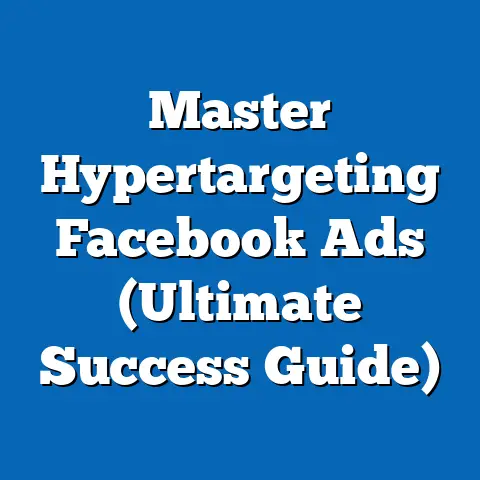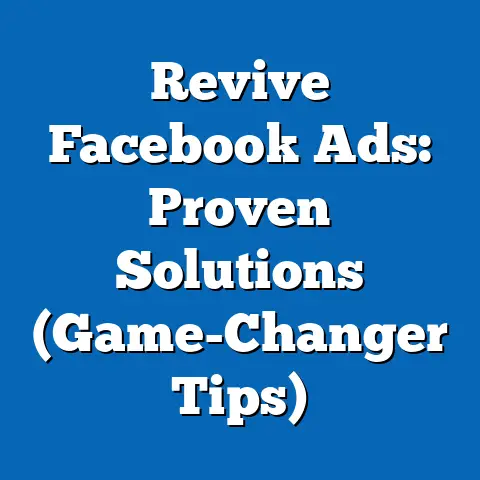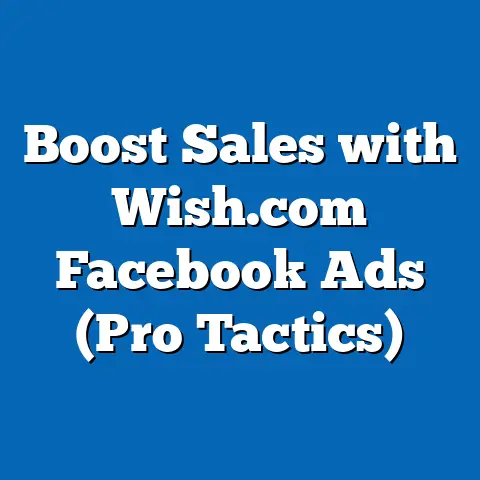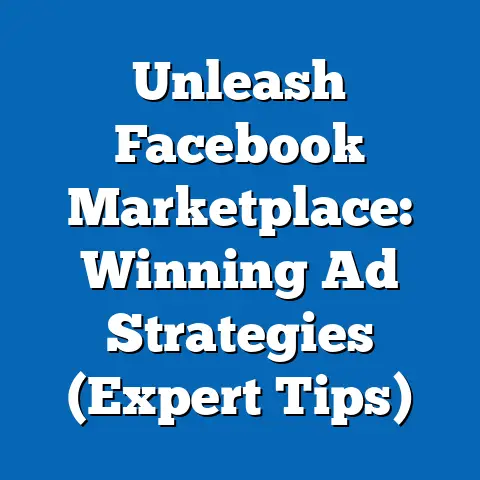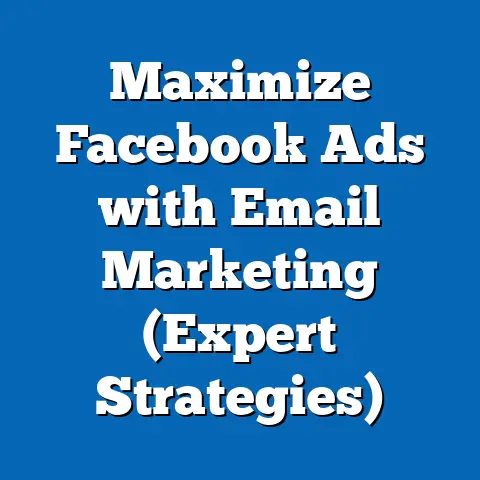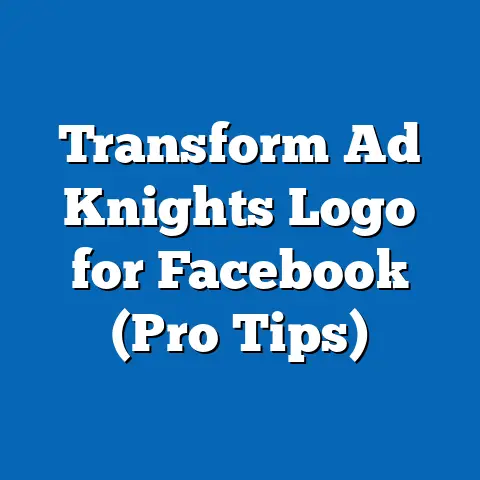Master Facebook Ads Image Formats (Ultimate Guide)
I’ve seen firsthand how businesses pour their marketing budgets into Facebook ads, hoping to connect with their target audience and drive conversions. But here’s the thing: even the most meticulously crafted ad copy can fall flat if it’s paired with a lackluster image. Think of your Facebook ad image as the storefront window of your business in the digital world. It’s the first thing people see, and it needs to grab their attention instantly.
The visual aspect of your ad is what initially draws people in, and the right image format can be the difference between a scroll-past and a click-through. It can enhance engagement, improve click-through rates, and ultimately lead to higher conversion rates. That’s why understanding and mastering Facebook ads image formats is so crucial.
In this guide, I’m going to walk you through everything you need to know about Facebook ads image formats. From understanding the specific dimensions and file types to exploring best practices for creating compelling visuals, I’ll equip you with the knowledge to make your Facebook ads stand out and deliver real results. Whether you’re a seasoned marketer, a business owner just starting out, or simply someone curious about the power of Facebook advertising, this guide is for you. Let’s dive in and unlock the potential of visually stunning Facebook ads!
Section 1: Understanding Facebook’s Image Specifications
Facebook is a stickler for specifications. I learned this the hard way early in my career when an entire campaign was rejected because an image was just a few pixels off! Understanding Facebook’s current image specifications is absolutely critical for ensuring your ads are displayed correctly and perform optimally. Think of it as knowing the rules of the road before you start driving.
Here’s a breakdown of the key specifications for various ad formats:
- Single Image Ads: These are the most common type of Facebook ad.
- Recommended Image Size: 1200 x 628 pixels
- Aspect Ratio: 1.91:1
- File Types: JPG or PNG
- Maximum File Size: 30MB
- Carousel Ads: These ads allow you to showcase multiple images or videos within a single ad unit.
- Recommended Image Size: 1080 x 1080 pixels
- Aspect Ratio: 1:1 (Square)
- File Types: JPG or PNG
- Maximum File Size: 30MB
- Collection Ads: These ads are designed for e-commerce, allowing users to browse and purchase products directly from the ad.
- Recommended Image Size (Hero Image): 1200 x 628 pixels
- Recommended Image Size (Product Images): 600 x 600 pixels
- Aspect Ratio (Hero Image): 1.91:1
- Aspect Ratio (Product Images): 1:1 (Square)
- File Types: JPG or PNG
- Maximum File Size: 30MB
- Instant Experience Ads (formerly Canvas Ads): These are full-screen, mobile-optimized ads that provide an immersive experience.
- Recommended Image Size (Header Image): 1200 x 444 pixels
- Aspect Ratio (Header Image): 2.7:1
- File Types: JPG or PNG
- Maximum File Size: 30MB
- Stories Ads: These ads appear in the Facebook Stories format.
- Recommended Image Size: 1080 x 1920 pixels
- Aspect Ratio: 9:16
- File Types: JPG or PNG
- Maximum File Size: 30MB
- Recommended Image Size: 1200 x 628 pixels
- Aspect Ratio: 1.91:1
- File Types: JPG or PNG
- Maximum File Size: 30MB
- Recommended Image Size: 1080 x 1080 pixels
- Aspect Ratio: 1:1 (Square)
- File Types: JPG or PNG
- Maximum File Size: 30MB
- Recommended Image Size (Hero Image): 1200 x 628 pixels
- Recommended Image Size (Product Images): 600 x 600 pixels
- Aspect Ratio (Hero Image): 1.91:1
- Aspect Ratio (Product Images): 1:1 (Square)
- File Types: JPG or PNG
- Maximum File Size: 30MB
- Recommended Image Size (Header Image): 1200 x 444 pixels
- Aspect Ratio (Header Image): 2.7:1
- File Types: JPG or PNG
- Maximum File Size: 30MB
- Recommended Image Size: 1080 x 1920 pixels
- Aspect Ratio: 9:16
- File Types: JPG or PNG
- Maximum File Size: 30MB
It’s also worth noting that Facebook sometimes updates these specifications. I make it a habit to regularly check the Facebook Ads Guide (https://www.facebook.com/business/ads-guide) to stay on top of any changes. For example, I remember when Facebook increased the recommended image size for single image ads; businesses that didn’t update their images saw a dip in performance.
Adhering to these specifications isn’t just about avoiding rejection; it’s about optimizing your ad for performance. Images that are the correct size and aspect ratio load faster, look better, and are more likely to capture the attention of your target audience.
Key Takeaway: Always double-check Facebook’s image specifications before creating your ads. It’s a small step that can make a big difference in the success of your campaigns.
Section 2: Types of Image Formats Used in Facebook Ads
Now that you know the specifications, let’s talk about the different types of image formats you can use in your Facebook ads. The most common formats are JPG, PNG, and GIF, and each has its own strengths and weaknesses.
- JPG (or JPEG): This is the most widely used image format on the web.
- Advantages: JPGs offer excellent compression, resulting in smaller file sizes. This means faster loading times, which is crucial for mobile users.
- Disadvantages: JPGs use lossy compression, which means some image quality is lost when the file is saved. This can be noticeable with images that contain a lot of text or sharp lines.
- Best Suited For: Photographs, images with gradients, and general-purpose ads where file size is a priority.
- PNG: This format is known for its lossless compression, meaning no image quality is lost when the file is saved.
- Advantages: PNGs are ideal for images with text, logos, and graphics with sharp lines. They also support transparency, which can be useful for certain ad designs.
- Disadvantages: PNGs generally have larger file sizes than JPGs, which can impact loading times.
- Best Suited For: Logos, graphics, images with text overlays, and ads where image quality is paramount.
- GIF: This format supports animation and is often used for short, looping videos.
- Advantages: GIFs can be eye-catching and engaging, especially in a crowded news feed.
- Disadvantages: GIFs have limited color palettes and can result in lower image quality. They also tend to have larger file sizes than optimized JPGs or PNGs.
- Best Suited For: Short animations, product demos, and ads where you want to grab attention with movement.
- Advantages: JPGs offer excellent compression, resulting in smaller file sizes. This means faster loading times, which is crucial for mobile users.
- Disadvantages: JPGs use lossy compression, which means some image quality is lost when the file is saved. This can be noticeable with images that contain a lot of text or sharp lines.
- Best Suited For: Photographs, images with gradients, and general-purpose ads where file size is a priority.
- Advantages: PNGs are ideal for images with text, logos, and graphics with sharp lines. They also support transparency, which can be useful for certain ad designs.
- Disadvantages: PNGs generally have larger file sizes than JPGs, which can impact loading times.
- Best Suited For: Logos, graphics, images with text overlays, and ads where image quality is paramount.
- Advantages: GIFs can be eye-catching and engaging, especially in a crowded news feed.
- Disadvantages: GIFs have limited color palettes and can result in lower image quality. They also tend to have larger file sizes than optimized JPGs or PNGs.
- Best Suited For: Short animations, product demos, and ads where you want to grab attention with movement.
I remember working on a campaign for a local restaurant where we initially used JPGs for their menu items. The text was blurry, and the images looked unprofessional. Switching to PNGs made a huge difference; the menu items looked crisp and appealing, and we saw a significant increase in engagement.
Choosing the right format depends on your advertising objectives. If you’re focused on branding and want to showcase your logo in the best possible light, PNG is the way to go. If you’re running a direct response campaign and need to optimize for loading speed, JPG might be a better choice. And if you want to add a touch of animation to your ads, GIF can be a great option.
Key Takeaway: Experiment with different image formats to see which performs best for your specific advertising goals. Consider both image quality and file size when making your decision.
Section 3: Best Practices for Creating Images for Facebook Ads
Creating compelling images for Facebook ads is an art and a science. It’s not just about slapping a picture on a post; it’s about understanding what resonates with your target audience and crafting visuals that grab their attention and drive action. Here are some best practices I’ve learned over the years:
- Use High-Resolution Images: This seems obvious, but it’s worth repeating. Blurry or pixelated images look unprofessional and can damage your brand’s credibility. Aim for the highest resolution possible while staying within Facebook’s file size limits.
- Utilize Colors and Contrast: Colors evoke emotions and can influence consumer behavior. Use colors that align with your brand and your message. Contrast is also important; make sure your images stand out against the background of the Facebook news feed.
- Incorporate Branding Elements Effectively: Your brand should be recognizable in your ads. Include your logo, brand colors, and fonts. However, don’t overdo it; your branding should complement the image, not overwhelm it.
- Balance Text Overlays: Text overlays can be a great way to convey your message, but Facebook has a “20% text rule” that you need to be aware of. Ads with too much text may not be shown to as many people. Use text sparingly and focus on creating a visually appealing image.
- Consider the Psychological Aspects of Imagery: People are naturally drawn to certain types of images. Faces, for example, tend to capture attention. Use images that evoke positive emotions and align with your target audience’s values.
- A/B Test Everything: Don’t assume you know what will work best. Test different images, colors, and text overlays to see what resonates with your audience. Facebook’s A/B testing tools make this easy to do.
I once worked with a client who was adamant about using a particular image in their Facebook ads. I thought it was too generic and wouldn’t perform well. However, instead of arguing, I suggested we A/B test it against another image I thought was more compelling. To my surprise, the client’s image outperformed mine by a significant margin! This experience taught me the importance of testing and letting the data guide your decisions.
Key Takeaway: Creating compelling images for Facebook ads requires a combination of creativity, technical skill, and data-driven decision-making. Follow these best practices to create visuals that capture attention, resonate with your audience, and drive results.
Section 4: A/B Testing Image Formats
A/B testing, also known as split testing, is the process of comparing two versions of an ad to see which one performs better. In the context of Facebook ads image formats, this means testing different image types, sizes, or even slight variations in design to determine which resonates most with your target audience. I can’t stress enough how important A/B testing is. Don’t just assume one format or image is going to work. Test, test, test!
Here’s how to approach A/B testing image formats:
- Define Your Goal: What do you want to achieve with your A/B test? Are you trying to increase click-through rates, lower your cost per acquisition, or improve your conversion rate?
- Create Two Versions of Your Ad: Change only one variable at a time. For example, you might test a JPG version of an image against a PNG version, keeping everything else the same.
- Set Up Your A/B Test in Facebook Ads Manager: Facebook makes it easy to create A/B tests. Simply select the “Create A/B Test” option when setting up your campaign.
- Define Your Audience and Budget: Make sure both versions of your ad are shown to the same audience and that you allocate enough budget to get statistically significant results.
- Track Your Results: Monitor the performance of each version of your ad. Pay attention to metrics like engagement rate, click-through rate, conversion rate, and cost per acquisition.
- Analyze Your Findings: Once your A/B test has run for a sufficient amount of time (typically a week or two), analyze the results. Which version of your ad performed better? Why do you think that is?
- Implement Your Findings: Use what you learned from your A/B test to optimize your future ads. If one image format consistently outperforms others, make it your default choice.
For example, let’s say you’re running an ad campaign to promote a new product. You could A/B test a static image against a GIF animation to see which one generates more interest. Or you could test different color schemes to see which one resonates best with your target audience.
Here are some key metrics to track during A/B testing:
- Engagement Rate: This measures how much people are interacting with your ad (e.g., likes, comments, shares).
- Click-Through Rate (CTR): This measures the percentage of people who see your ad and click on it.
- Conversion Rate: This measures the percentage of people who take a desired action after clicking on your ad (e.g., making a purchase, filling out a form).
- Cost Per Acquisition (CPA): This measures how much it costs you to acquire a new customer through your ad campaign.
Key Takeaway: A/B testing is an essential part of optimizing your Facebook ads. By testing different image formats and tracking your results, you can identify what works best for your target audience and improve the performance of your campaigns.
Section 5: Case Studies and Real-World Examples
To illustrate the power of mastering Facebook ads image formats, let’s take a look at a few case studies and real-world examples:
-
Case Study 1: E-commerce Brand Using Carousel Ads
An e-commerce brand selling clothing wanted to increase sales through Facebook ads. They decided to use carousel ads to showcase multiple products in a single ad unit. They used high-quality images with a consistent aesthetic and a clear call to action. The result was a 30% increase in sales compared to their previous single image ads. * Case Study 2: Local Restaurant Using Instant Experience Ads
A local restaurant wanted to promote their new menu items. They created an Instant Experience ad that showcased mouth-watering images of their dishes, along with customer testimonials and a link to their online ordering system. The ad was visually appealing and provided a seamless user experience. The result was a 40% increase in online orders. * Real-World Example: Fitness Brand Using GIF Animations
A fitness brand used GIF animations to demonstrate exercises in their Facebook ads. The GIFs were short, engaging, and easy to understand. They captured attention and encouraged people to click through to the brand’s website to learn more. The result was a significant increase in website traffic and lead generation.
Case Study 1: E-commerce Brand Using Carousel Ads
An e-commerce brand selling clothing wanted to increase sales through Facebook ads. They decided to use carousel ads to showcase multiple products in a single ad unit. They used high-quality images with a consistent aesthetic and a clear call to action. The result was a 30% increase in sales compared to their previous single image ads. * Case Study 2: Local Restaurant Using Instant Experience Ads
A local restaurant wanted to promote their new menu items. They created an Instant Experience ad that showcased mouth-watering images of their dishes, along with customer testimonials and a link to their online ordering system. The ad was visually appealing and provided a seamless user experience. The result was a 40% increase in online orders. * Real-World Example: Fitness Brand Using GIF Animations
A fitness brand used GIF animations to demonstrate exercises in their Facebook ads. The GIFs were short, engaging, and easy to understand. They captured attention and encouraged people to click through to the brand’s website to learn more. The result was a significant increase in website traffic and lead generation.
These examples demonstrate how different image formats can be used effectively to achieve different advertising goals. The key is to understand your target audience, choose the right format for your message, and create visually appealing images that capture attention and drive action.
Key Takeaway: Studying successful Facebook ad campaigns can provide valuable insights and inspiration. Pay attention to the image formats they use, the visual elements they incorporate, and the overall message they convey.
Conclusion
Mastering Facebook ads image formats is essential for achieving advertising success on the platform. By understanding Facebook’s image specifications, choosing the right image formats, creating compelling visuals, and A/B testing your ads, you can significantly improve the performance of your campaigns.
Remember, your Facebook ad image is often the first thing people see, so make it count. Invest time and effort into creating visuals that capture attention, resonate with your audience, and drive results.
I encourage you to implement the strategies and insights gained from this guide as you create your own Facebook ad campaigns. Experiment with different image formats, track your results, and continuously optimize your ads to achieve your advertising goals. With the right approach, you can unlock the full potential of Facebook advertising and drive significant growth for your business. Good luck!

